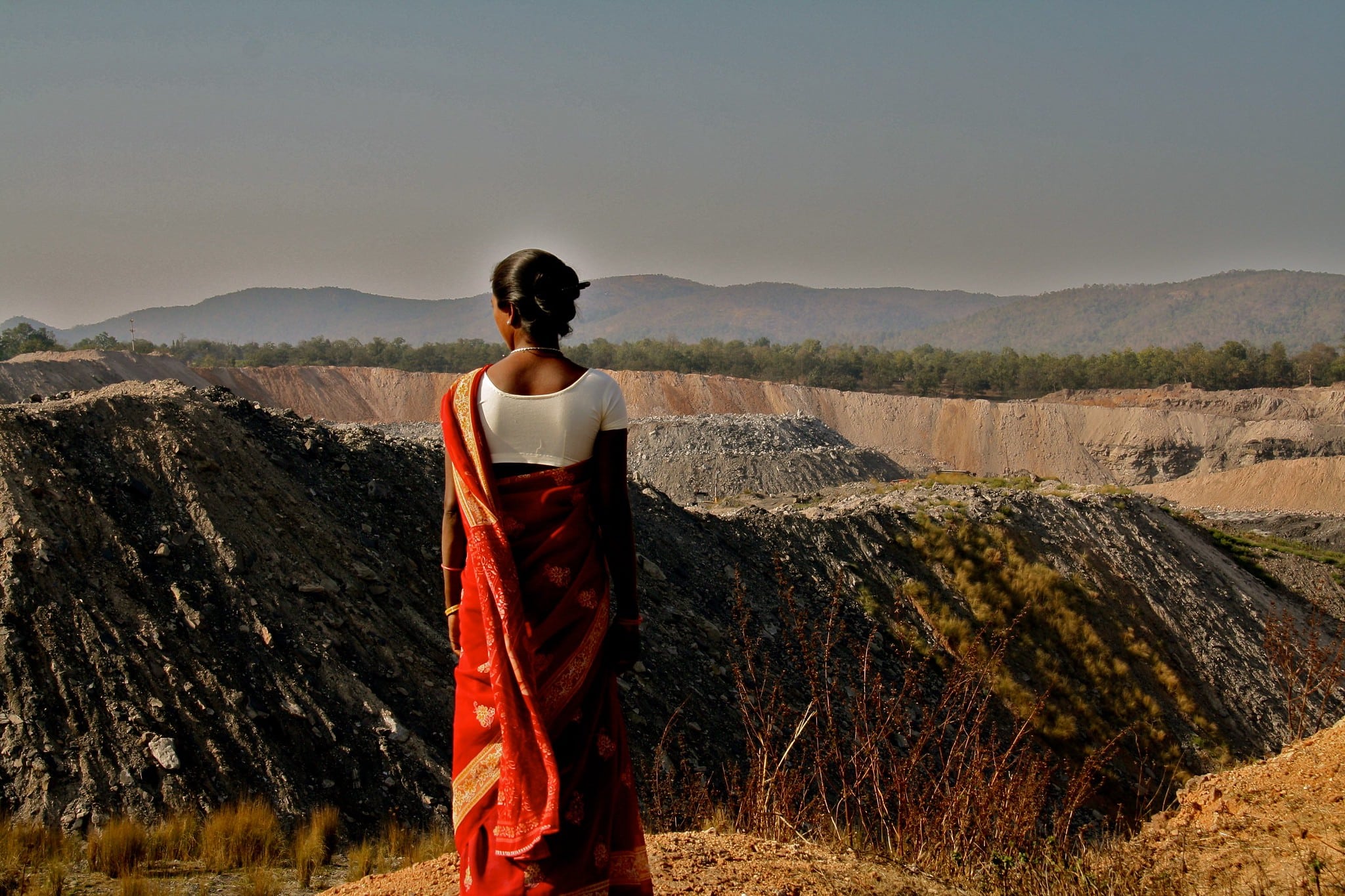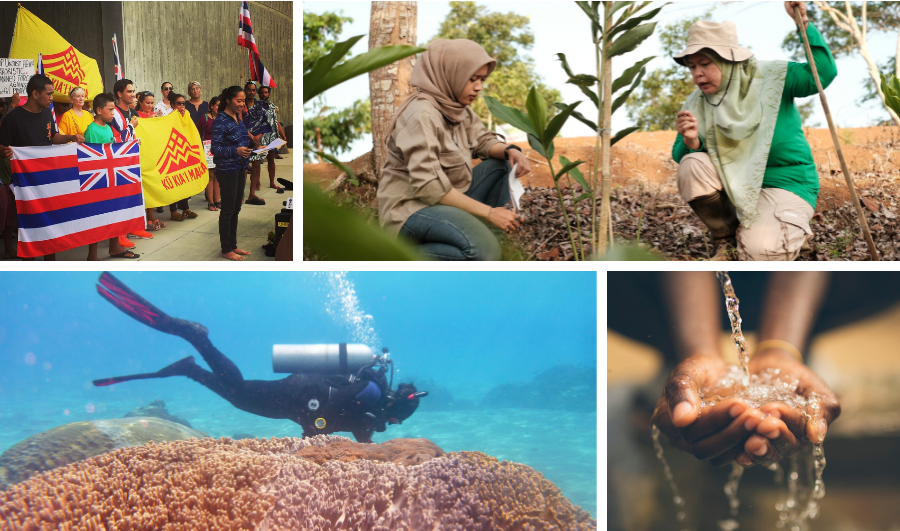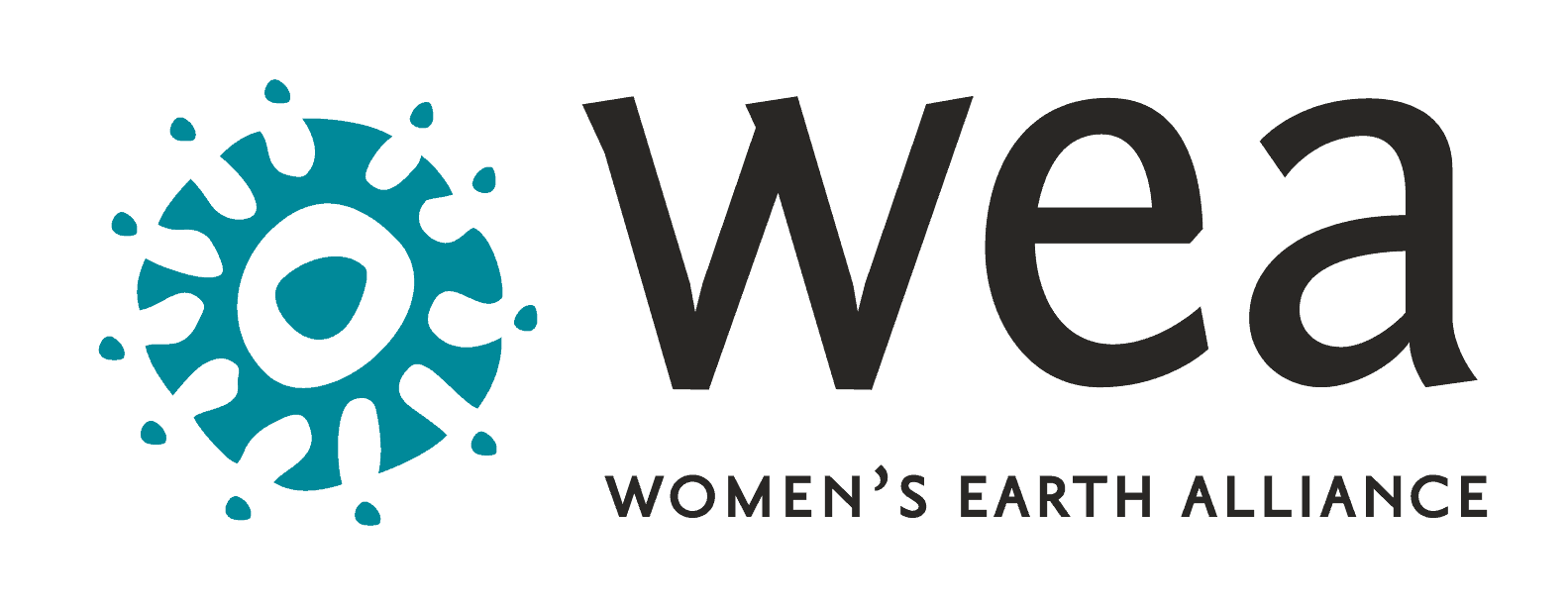The Climate Crisis is a Women’s Issue

Courageous. Innovative. Resilient.
Loving.
These are just a few of the words that come to mind when we think of the 12,645 women leaders we’ve met and supported over the last 16 years. The mothers, wives, sisters, daughters and friends who selflessly risk their lives everyday to ensure the families, communities and future generations they love can access safe water, healthy food, clean energy and secure lands to call home. These (s)heroes are designing water filtration systems, growing food forests and carbon sinks, saving endangered and climate-resilient indigenous seeds, starting eco-enterprises to ensure sustainable livelihoods, and so much more.
Because the heaviest burdens of the climate crisis fall on women’s shoulders. And yet, as caretakers of families and the natural resources on which life depends, women are also best positioned to innovate the solutions our world urgently needs.

Women shoulder the heaviest burdens of the climate crisis.
We’ve met women from the Western Ghats of Southern India, where the unpredictable climate has rendered the monsoons—one of the area’s most essential ecological events—unreliable. For these women farmers, who manage indigenous seed stocks and food forests, this has had devastating impacts on their ability to provide food for their families, increasing hunger and poverty across the region.
We’ve met women from the Pacific, where storms, rising sea levels and food insecurity leads to climate-forced displacement and human rights abuses of frontline climate refugees.
We’ve also met women in regions experiencing 100-year storms on an alarmingly regular basis, causing mass destruction and loss of life. For these women, ensuring lawmakers pass city-wide climate-smart policies, divest from climate change-inducing industries, and implement progressive environmental regulations means the difference between life and death.
Climate change is a threat multiplier. It exacerbates existing structural and gender inequities, which means that as ecological crises intensify, women and girls are hit the hardest.
Women and girls make up 80% of the world’s climate refugees and are 14 times more likely to die in a climate-related disaster than men. This is often because they are the last to eat or be rescued; face greater health and safety risks as water and sanitation systems become compromised; experience increased sexual violence and trafficking during climate-induced displacement; and are more likely to lose their jobs and sink into poverty. For Indigenous women and women of color, these risks are exponentially higher.
As the economic and health impacts of unpredictable floods, long-term droughts, escalating food and water insecurity, and severe weather events increase, women will continue to be disproportionately harmed. The world’s poorest countries are the most vulnerable to these threats, with women making up the majority of the 1.5 billion people living on less than $1 per day. In fact, around the world, women between the ages of 25-34 are more likely than men to live in extreme poverty.
Women are also those most severely impacted by climate change-inducing industries, like extractive oil and gas projects. Many of the communities where these projects are located have become sites of chemical manufacturing and waste dumping, and are known as “sacrifice zones”. Women in these communities—most of whom are Indigenous women or women of color—hold a cumulative body burden of pollutants that are in their immediate surrounding environment, which can be passed to the next generation through their breast milk. Other impacted communities have seen an introduction of large encampments of men (“man camps”) who work for the gas and oil industry. The devastating impacts of the environmental violence this causes ranges from sexual and domestic violence, increased drug and alcohol use, murders and disappearances, reproductive illnesses and toxic exposure, threats to culture and Indigenous lifeways, crime, trafficking and other social stressors.

Women-led solutions are key to tackling climate change.
From these frontlines of the climate crisis—where the health, safety and well-being of women is inextricably linked to that of the environment—women are best positioned to design the solutions our world so urgently needs. Because although women are disproportionately impacted by the climate crisis, their leadership has never been more pivotal to reversing global warming and all the threats it poses.
It is globally recognized that women’s leadership is one of the greatest leverage points for increasing our collective climate resilience. Women have long been the mothers of movements to protect our communities and the earth. The original “tree huggers” were women of the Bishnois community in Rajasthan, India in the 1700’s who wrapped their arms around their sacred trees to protest the government from cutting them down, many losing their lives in the fight. This inspired India’s women-led Chipko movement of the 1970’s.
Kenya’s Green Belt Movement, founded by Professor Wangari Mathaai, started as a women-led initiative to address the impacts of deforestation most acutely felt by women across the country. It is now recognized for achieving environmental rehabilitation, and linking sustainable development, peace and democracy through tree planting.
From the women of the Bolivian Water Wars who marched in the streets against water privatization, to the founding grandmothers of Standing Rock, around the world women have led the majority of local environmental justice movements despite persecution and deep inequity.
When their leadership is respected, we see real change take root.
A study of 130 countries found that women in government positions are more likely to sign on to international treaties to reduce global warming than men. And when women participate equally with men in politics and policymaking, climate policy interventions are more effective. Recent research has shown that women are better at adopting innovative and preventative solutions to climate change, with greater transparency and better conflict resolution. Where women have higher social and political status, their countries have 12% lower CO2 emissions and more protected land areas than in countries where women are disproportionately disenfranchised. In fact, Indigenous women’s decision-making in local forest management significantly improves forest conditions and conservation. And increasing evidence shows that women's empowerment, education, and leadership could reduce 85 gigatons of atmospheric CO2.
Yet, the women who step forward time and again to address climate change and prevent environmental destruction and injustice face an uphill battle. Their bodies and health are threatened, their work is under-resourced, and their leadership is stymied. Deep structural inequities and underinvestment rob these leaders—half the global population—of their full potential to profoundly shape our communities, our values, and the future on this planet.
Imagine what’s possible when those barriers are removed.

Around the world, WEA Leaders are innovating, designing and implementing grassroots solutions to protect the earth and end the climate crisis.
WEA Leaders like Binta Yahaya in Lere, a rural town in Kaduna State, Nigeria. In her town, most women and girls cook over open fires and suffer from chronic respiratory infections and other health problems from the toxic smoke. These traditional cookstoves burn fuels (such as wood, charcoal, coal, and kerosene) and make up more than half of all global black carbon emissions, the second largest contributor to climate change after carbon dioxide. Binta participated in WEA’s WISE Clean Energy Training and gained entrepreneurial, leadership and technical skills, as well as a grant to launch a clean cookstove enterprise. Within a week, Binta sold 70 clean cookstoves to women in her village. Within a year, she’d sold over 1,000 clean cookstoves, and her positive impact on carbon emissions and the climate crisis continues to grow.
WEA Leaders like Esther Maurice in Kenya, who participated in WEA’s Women and Climate Training Program gained leadership development, skills and seed funding. Esther then led her local women’s group to launch a native tree growing campaign and trained community members on how to grow and manage trees on their land. In the past year, Esther alone has planted more than 1,200 trees, and she’s trained many others to do the same. All together, Esther’s group has grown more than 15,000 trees and protected 20 acres of forest.
WEA Leaders like Crystal Cavalier-Keck (Occaneechi Band of the Saponi Nation) and Desirée Shelley Flores (Monacan), two powerful Indigenous women at the frontlines of the effort to stop development of the Mountain Valley Pipeline (MVP) in the United States. The MVP is a proposed 303-mile pipeline carrying fracked gas from West Virginia to Virginia, with a proposed extension into North Caroline as well. It endangers multiple watersheds and sources of clean water for hundreds of communities, violates Indigenous rights as bulldozers plow through ancient burial mounds and other Sacred Sites, and it will be the single largest source of greenhouse gasses in Virginia, producing annual emissions of over 89 million metric tons of carbon dioxide equivalent. Crystal and Desirée have trained community members to peacefully resist pipeline construction, organized Water Walks, and sparked an entire movement to stop the MVP in its tracks. As a result, at a recent regulatory hearing on permitting for the MVP, Virginia became one of the first states to recognize the disproportionate impact of air pollution on Black, Indigenous, and low-income communities.
Every day that a woman’s needs are sidelined and her innovations thwarted is another day of missed opportunity for our world. But there is good news: Women around the world are taking a stand against climate change, as well as for their rights to lead. WEA exists to empower their leadership, investing in their capacity to create powerful solutions that ripple out across regions, nations, and our entire planet—now and for generations to come.
We know that we can ensure leaders like Binta have the training they need to launch clean energy eco-enterprises that will turn the dial on carbon emissions. We can provide leaders like Esther with the seed funding to launch a tree nursery, and protect and regenerate Kenya’s last rainforest. And we can connect leaders like Crystal and Desirée to a national and global network of partners and allies who will bolster and amplify their advocacy against a dangerous and destructive pipeline.
We can do all of this and more—together. Together, we can help women leaders end the climate crisis and change the world.


One day, the climate crisis and gender inequity will be a thing of the past. Our monthly giving community, the Seed Bank, is how we can all say we were a part of the solution. Just $50 helps 300 people access women-led climate solutions like regenerative agriculture, forest protection and clean energy.
